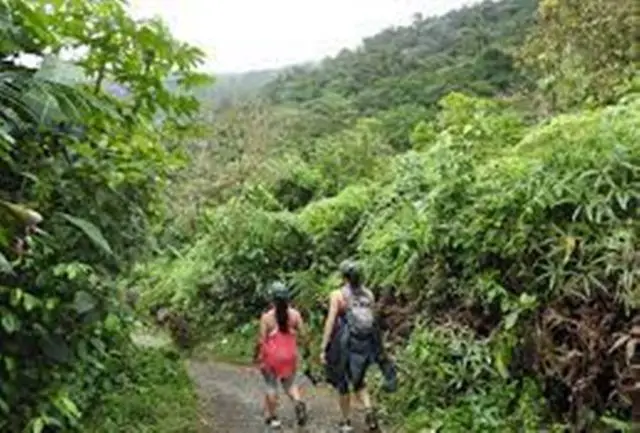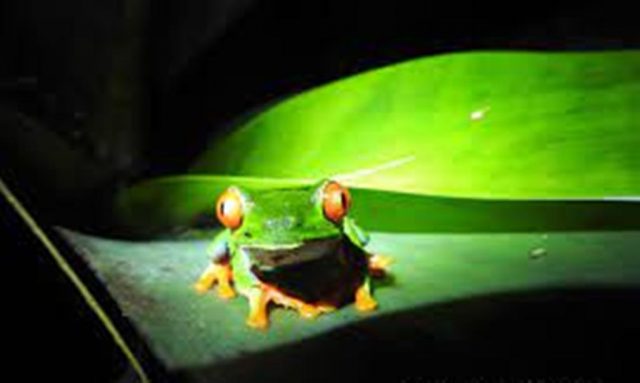The humid tropical forest, the rainforest jungle, is the perfect setting to enjoy different ecotourism experiences in Costa Rica. Beyond a sea of trees, leaves and lianas, journey to the green heart of global biodiversity through nature tourism proposals in “The Country of Ecotourism.” Quetzals, monkeys, butterflies, red-eyed frogs, snakes, sloths … Costa Rica is the best places to see them all!
The Humid Tropical Forest is a set of ecosystems that occupy barely 7% of the Earth’s surface, housing more than 50% of the known flora and fauna species. There are different types of Tropical Forest, mainly depending on the rainfall and the altitude at which they grow. That is why you may find: Rain Forest, Cloud Forest, Flood Forest, Mangrove, Dry Forest, Monsoon Forest, etc.

In the humid tropical forest, the prevailing humidity and warm temperatures form the perfect breeding ground to generate life while having rapid and continuous decomposition and regeneration processes. These are multi-species forests dominated by broad-leaved trees that reach a height between 30-50 meters. In addition to having enormous beauty and unparalleled biodiversity, they are the perfect place to practice nature tourism.
Braulio Carrillo Rain Forest Cable Car
If not the first, if it was one of the pioneering ecotourism experiences in the country of ecotourism. Inaugurated 25 years ago under the concept of adventure that at that time involved what has been leaking over the years as nature observation, the tropical forest cable car in the Braulio Carrillo National Park was a before and after in the way to observe the jungle.
Life in the humid forest takes place in the upper third of the forest, in the canopy. There, with better lighting conditions, the planet’s biodiversity is cooked. Bromeliads, orchids proliferate … epiphytic plants and also fruits that act as a food magnet for so many species of birds. Reptiles and especially amphibians also abound in this water factory, accompanied by mammals such as the anteater, the sloth and, below, the jaguar, puma, tapir, agouti, deer, etc.
Similar facilities have emerged in this Central American country (La Fortuna, Monteverde) but this one still seems to me to be the most authentic, the one that best delves into the elevated heart of the jungle. At a leisurely pace, to hear, smell, feel the forest. And it does so by traveling through the low, middle and high levels of the jungle. A privilege on this last step: the canopy.
In addition, the ecotourism experience – which is always accompanied by the indispensable figure of the guide – is complemented by the opportunity to visit an orchid, a butterfly farm and a herpetarium (serpentarium and frog, as they are called here). It is also an enclave of special love for hummingbirds. Located in the Cordillera Central, a natural passage between the Central Valley and the Caribbean, the Braulio Carrillo National Park is home to one of the best formations of humid tropical forest in the country.
Quetzals in the Monteverde Cloud Forest
Mystical and sacred in equal measure, the Quetzal (Pharomachrus mocinno) is the most emblematic bird in the jungles of Central America. Costa Rica is one of the paradises for your observation. San Gerardo de Dota, Los Quetzales National Park and Monteverde Reserve are the best places to live the unforgettable experience of the sighting of the Costa Rican subspecies (Pharomachrus mocinno costaricensis).
The Monteverde Cloud Forest is on the podium of biological diversity in a country that already houses 5% of the planet’s biodiversity. Among the forested habitats of Monteverde are the seasonal forest of the Pacific slope (700-1,500 masl), the rainforest of the Caribbean slope (below 1,400 masl) and the cloud forest (the predominant and located above 1,500 msnm).

In Monteverde there are also seven of the twelve Life Zones present in Costa Rica: tropical humid forest transition to pre-montane, pre-montane humid forest, very humid pre-montane forest, very humid lower pre-montane forest, lower montane rain forest, pre-montane rain forest and very humid forest. tropical transition to montane. It is easy to understand the obligation of your visit.
The Quetzal, with its long-tailed trogon with a spectacular iridescent coloration, has been the protagonist in its own right on my last visit to Monteverde.
They are solitary, migratory birds, which are more easily observed during the breeding period (which in Costa Rica goes between March-May). The abundance of avocado, however, makes it possible to observe it for a good part of the year or even, as in the places mentioned above, all year round. The subspecies present in Costa Rica is slightly smaller than the nominal subspecies.

